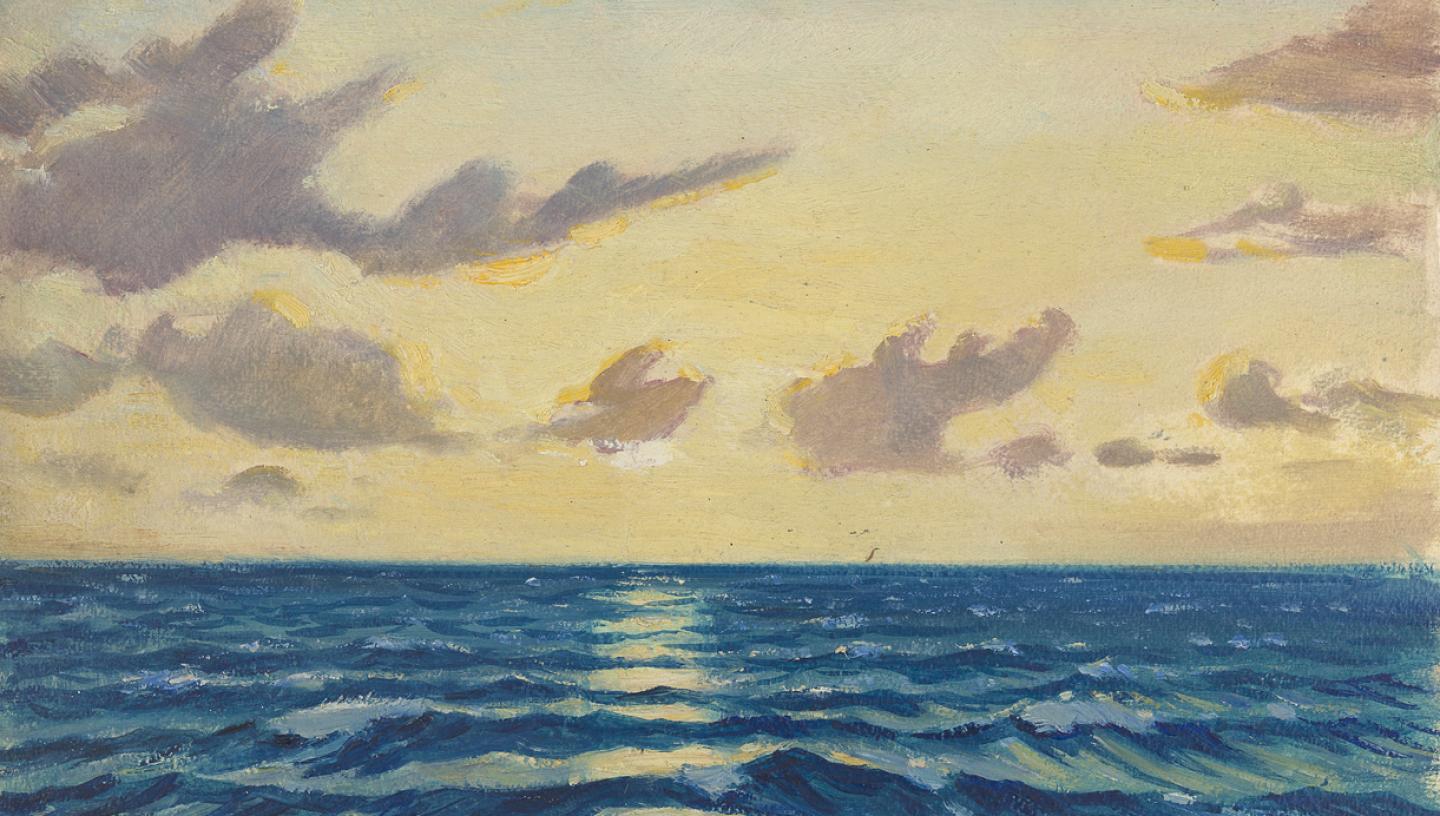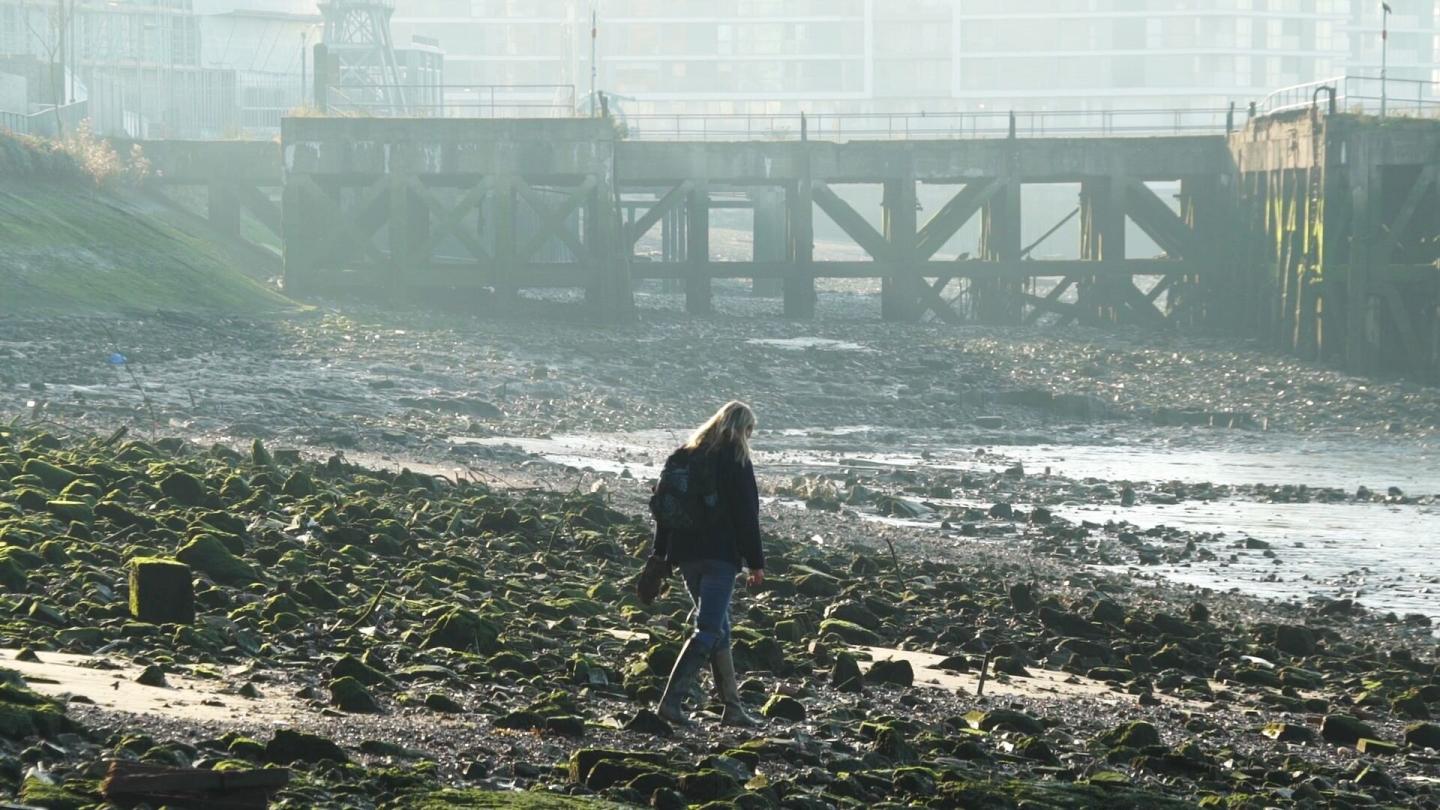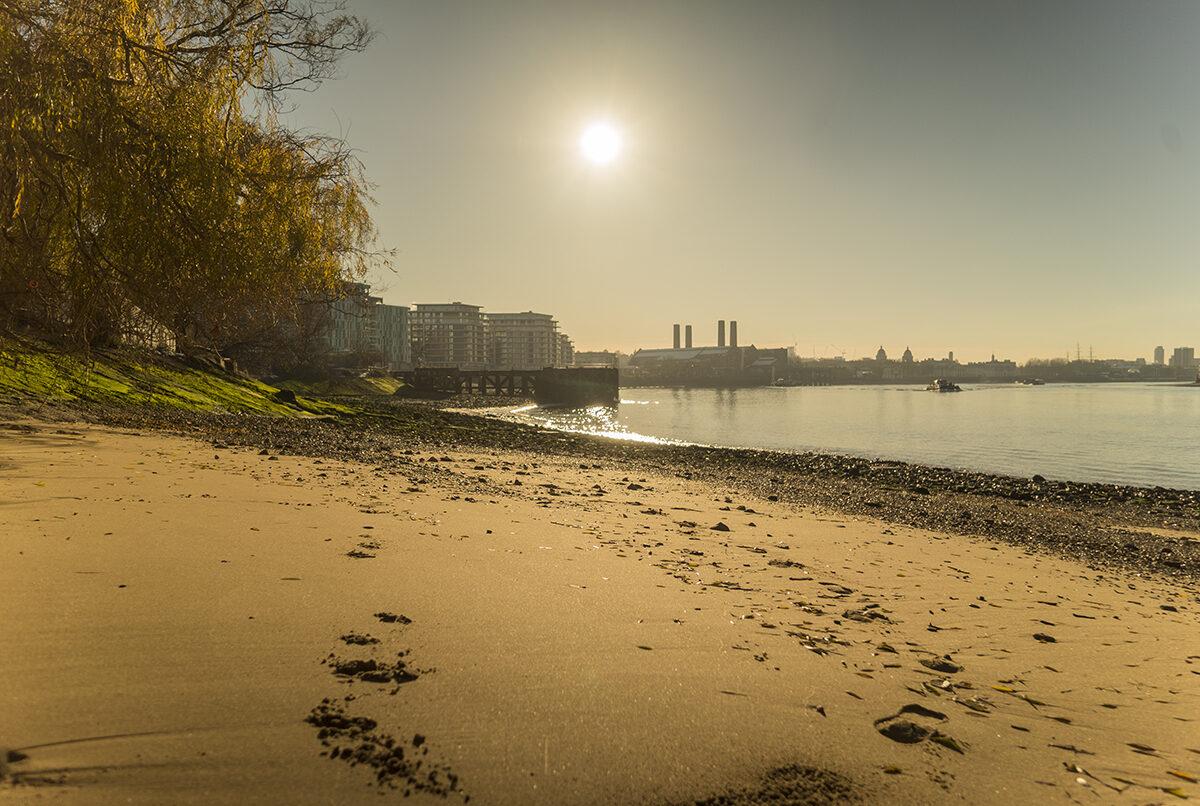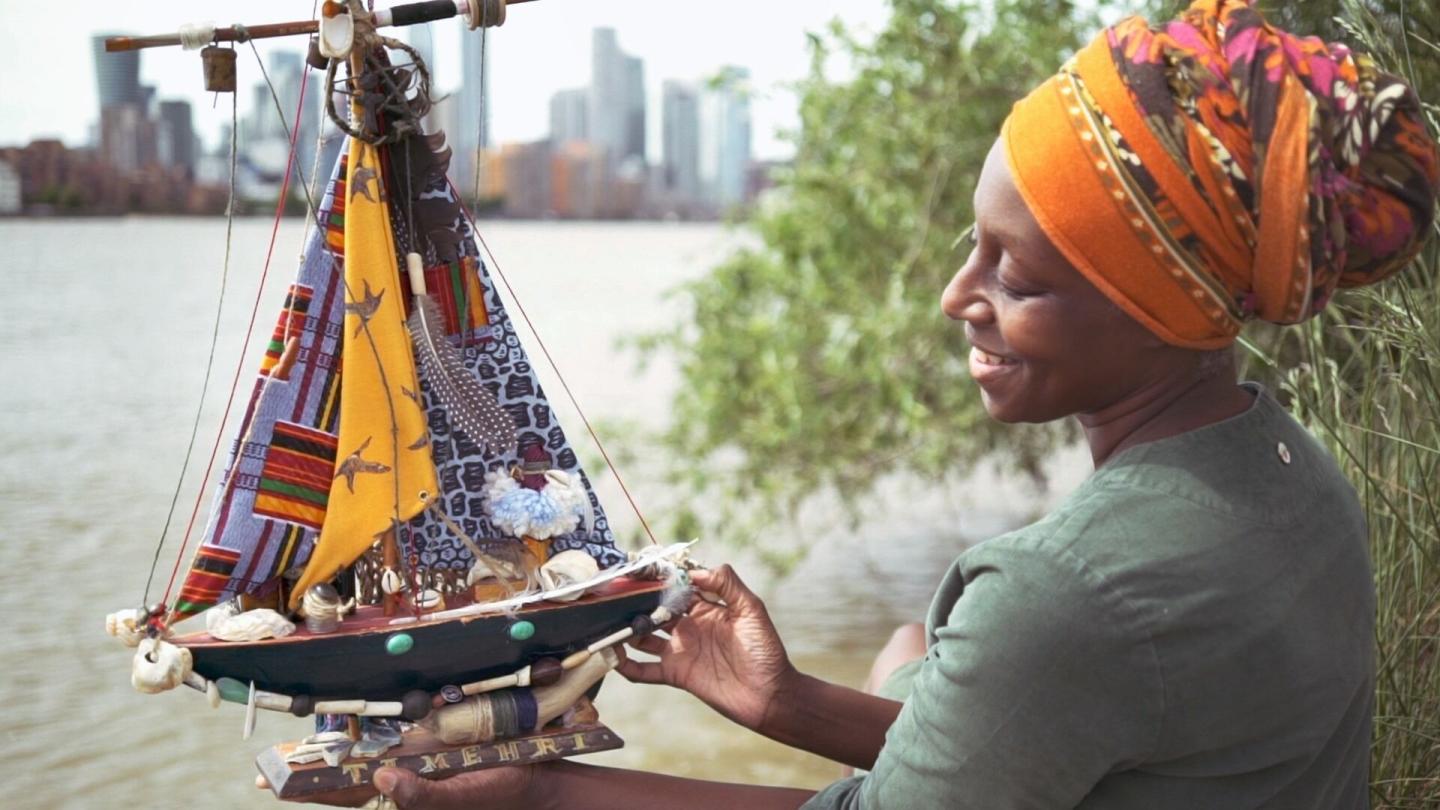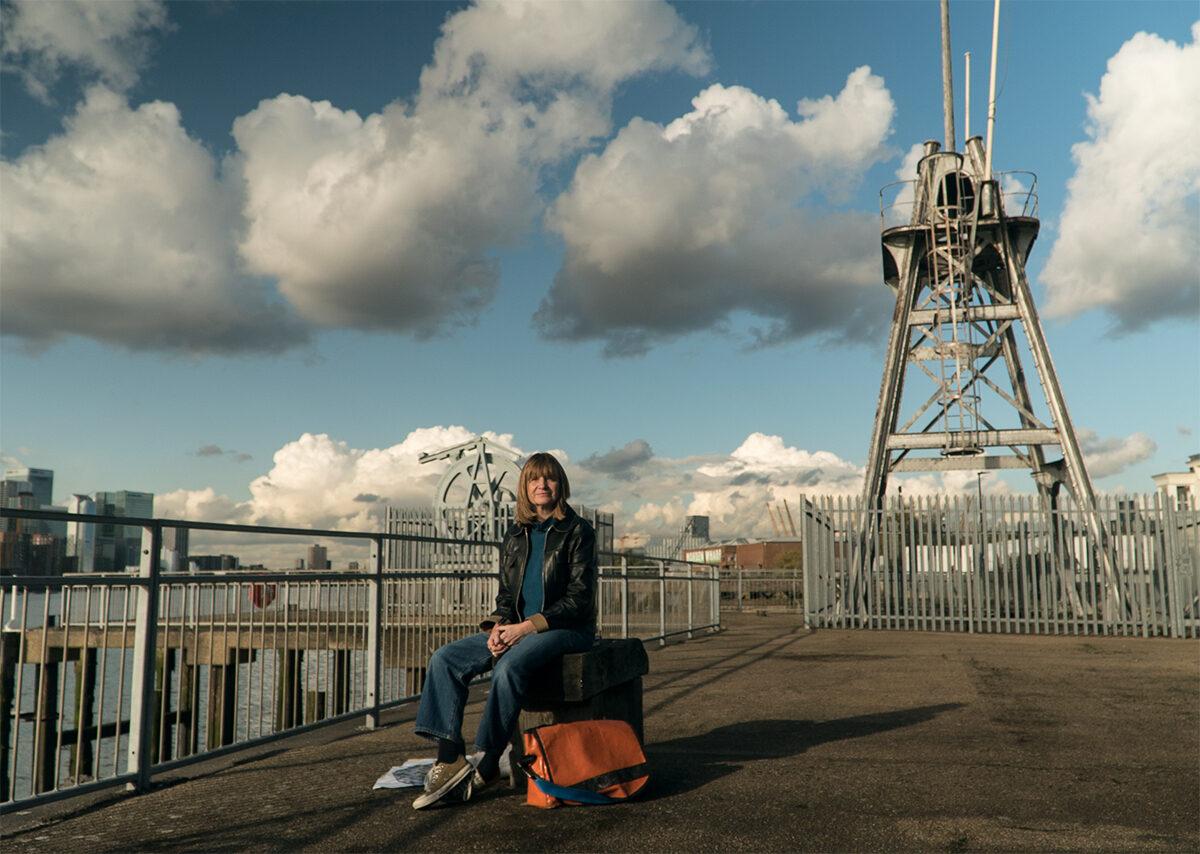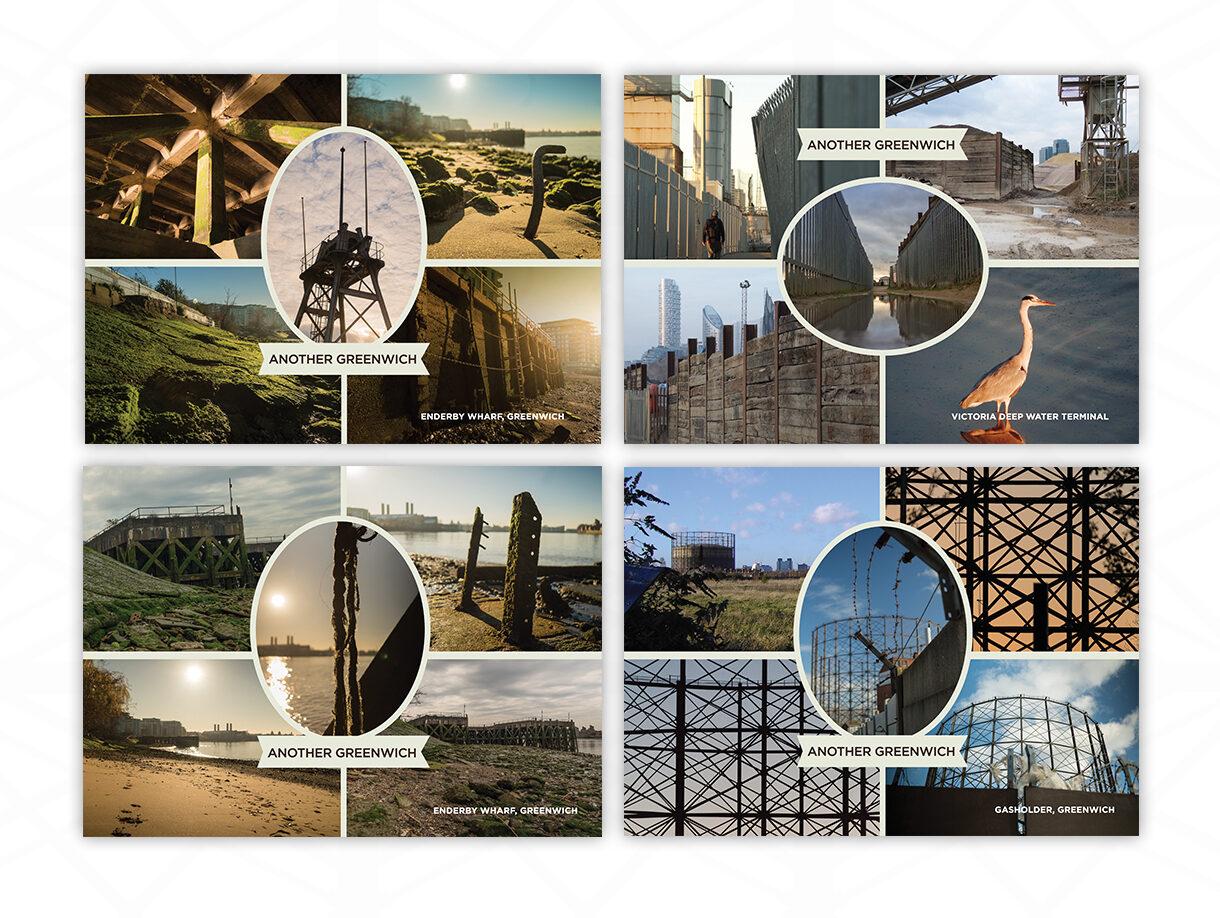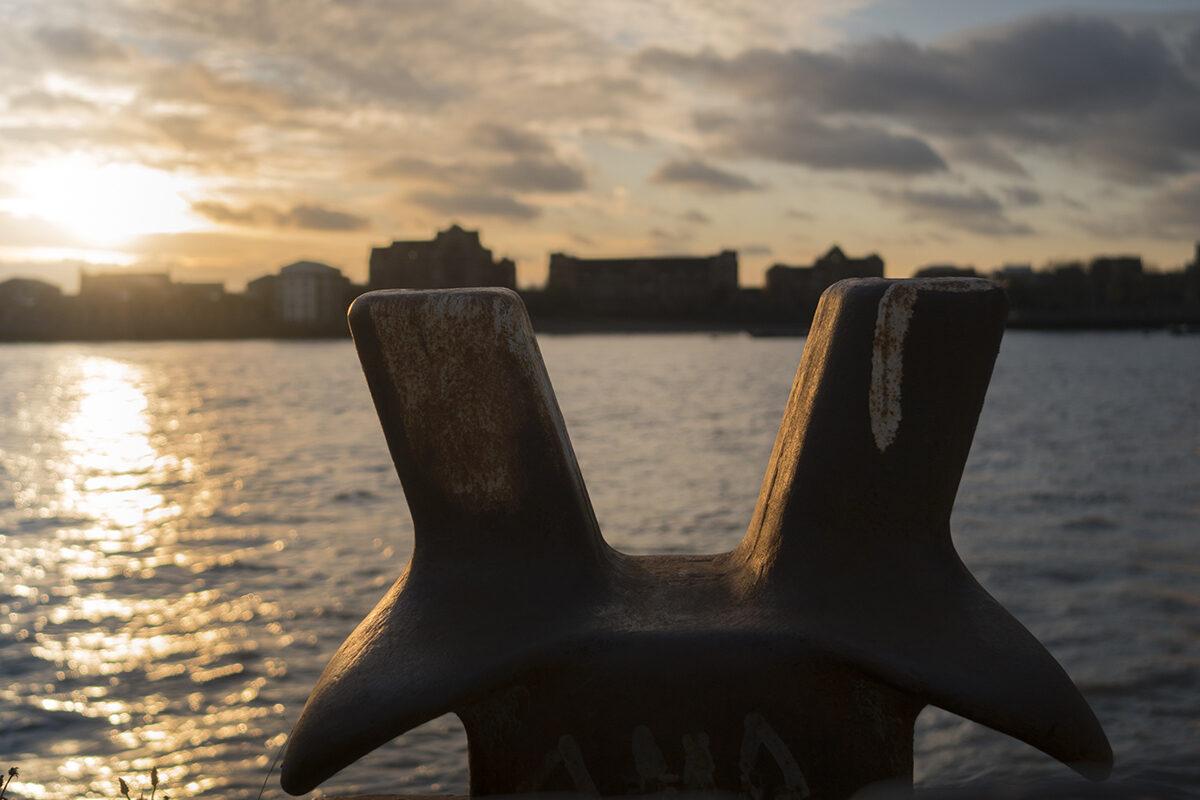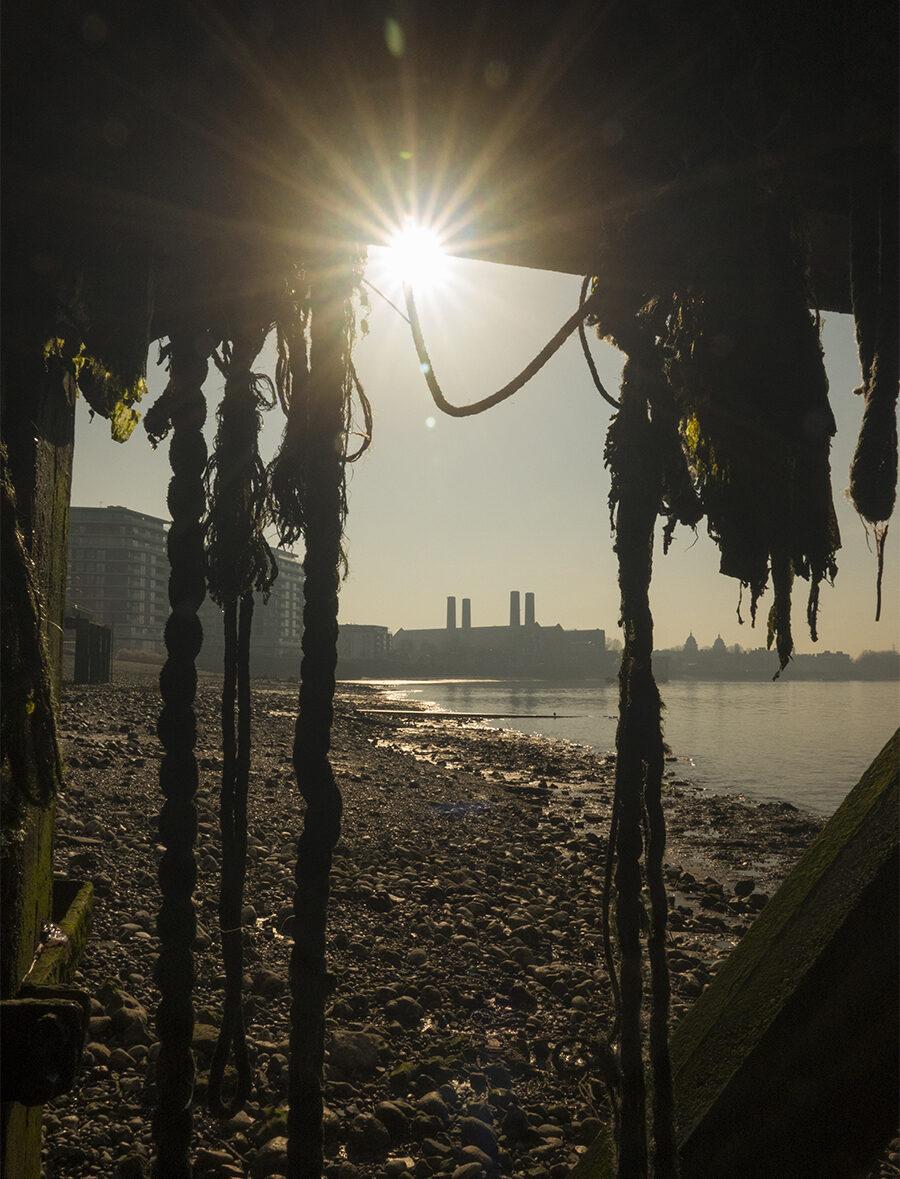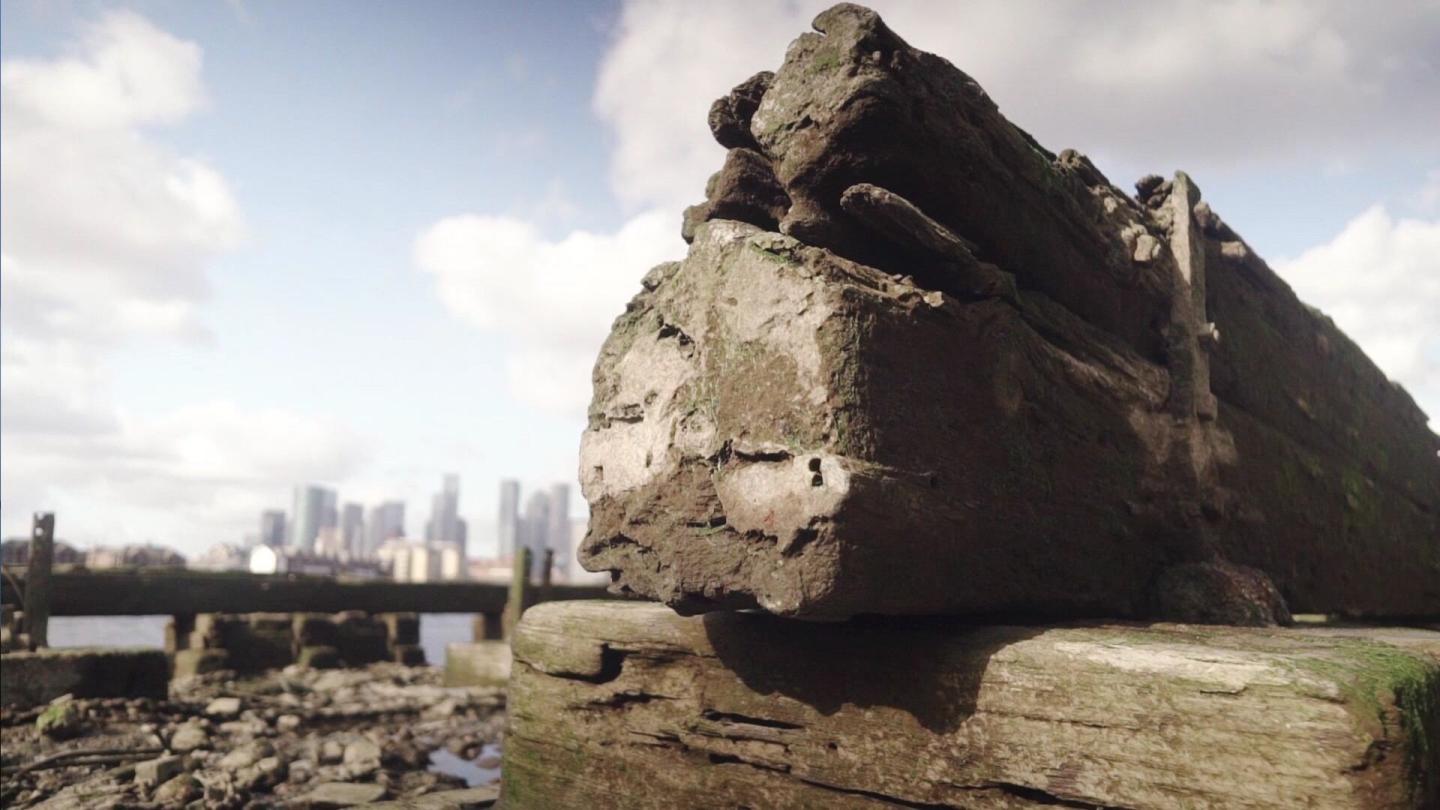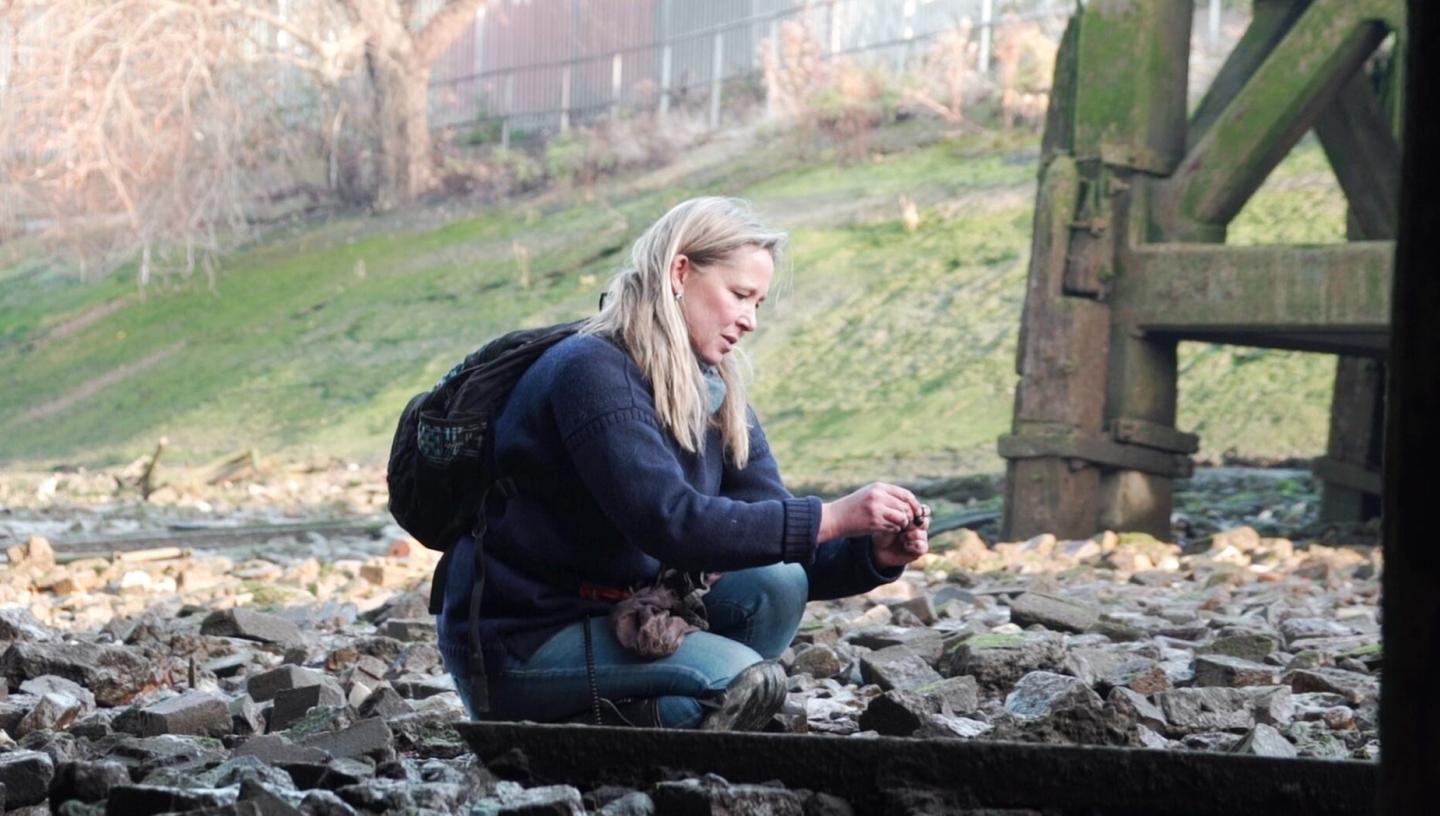
AM: What can viewers expect from Time and Tide?
PW: Time and Tide takes us along a once-industrial riverside path in South East London that was about to change forever. It’s a poignant and, at times, emotional film that looks at people's relationship with the landscape, history and their own sense of place. The river is a constant presence, a reminder of its vital role in shaping the landscape and the lives of those who lived and worked there.
AM: Where is the documentary set, and who are the characters we meet?
PW: The river path featured in the film mimics the twists and turns of a quietly historic stretch of the River Thames between East Greenwich and the Thames Barrier during a time of significant redevelopment. I say “quietly historic” as Greenwich is better known as the centre of world time and for its maritime and royal connections, but if you head east, another Greenwich appears. A place of industry and hard work, East Greenwich and its residents made a significant contribution to industrial history – including the development of the transatlantic communication cables at Enderby Wharf, which was a turning point in the history of communication — connecting Europe with North America for the first time, changing how we communicate forever and opening up new possibilities for global connectivity. The portrayal of the river's once-thriving industrial past is both haunting and beautiful, and the film serves as a reminder of the importance of preserving our cultural heritage.
East Greenwich is also along a stunning stretch of the Thames, with its beautiful light and sandy beaches attracting artists and photographers. At the heart of the film is Nicola White, a mudlark and artist who searches for objects that tell us about lost histories along the East Greenwich foreshore. Her finds have included a 17th-century skull and a World War I luggage tag. I first filmed Nicola in 2016; at that time, there were concerns about losing access to the foreshore because of proposed building work in the area, and Nicola felt a sense of urgency to gather as much history as possible before that happened.
I also filmed Thames artist and Greenwich legend Peter Kent who took me on a tour of some of his beautiful paintings of the Greenwich shoreline and vividly spoke of his memories of the once bustling London docklands. Learning about the area's rich history and evolution was fascinating.
Also featured is artist Remiiya Badru whose love of the Thames is expressed through art and photography, and a model boat called Timehri that links Remiiya's story to oceans worldwide. Author and historian Dr Mary Mills and Dr Megan Barford talk about East Greenwich’s industrial past along with visual artist Bobby Lloyd, writer Ian Tokelove, storyteller Richard Sylvester and members of the historic Greenwich Yacht Club, whose clubhouse was once in the canteen building of a disused steelworks.
The film reveals how objects, words, art, and photography can evoke memories and help us understand our history and relationship with the environment, especially when that environment changes.
AM: What has been the response to the film?
PW: The reaction has been quite overwhelming. The trailer for the film had 10,000 views in just over a day, and at the last screening, people had to be turned away because it had sold out. It's resonating with so many people because of the universal themes around change and our connection to nature, the past and bodies of water like rivers and oceans. There's been particular interest in Canada, where the other side of the transatlantic cable story took place.
To promote the film, I made retro-inspired picture postcards featuring places from the film that you wouldn't normally see on a postcard. We gave them out to people at screenings, giving rise to a whole range of postcards, prints and even gasholder giftwrap.
AM: What inspired you to make Time and Tide?
PW: I’ve fond memories of my first trip to Greenwich as a child as it was an exciting experience because we travelled there by boat, and I was captivated by the abandoned piers and wharves we’d passed and the sight of gulls and herons. I remember seeing huge cranes near Enderby Wharf from Greenwich Pier, and I wanted to explore the area further. When I finally came to live in the area, it was at the end of its industrial life, but remnants were still present in the landscape, so I set about documenting it with photography and writing. I've always been fascinated by the area and had always hoped to create a feature-length documentary about it, so I emailed people who I hoped would take part and knocked on many doors and eventually began making Time and Tide in 2015. Some things never change from childhood, and interestingly, the film features abandoned piers, wharves, and many gulls and herons.
AM: What was your approach to making the film?
PW: Not having the formal designation of “historian” meant that some doors were closed to me making Time and Tide, so instead of a linear history, the film drew on what no archive had, my memories and photography and the memories of others, keeping the film contemporary with the occasional dip back to the recent and distant past. As the present becomes the past, we all become historians. We become a composite of our experiences and memories, effectively carrying history within us. Time and Tide is a tribute to those who share their experiences through writing, photography, art, guided walks, and collecting objects. By focusing on people and their experiences, feelings and perceptions, the film brings the places they love to life in a unique and moving way.
AM: What do you hope people take away from watching Time and Tide?
PW: I hope visitors might be intrigued to add East Greenwich to their itineraries when visiting Greenwich. Perhaps they'll visit Enderby Wharf to photograph the pier, walk along the once-industrial river path, stop at a cafe or pub, and enjoy this quietly historic stretch of the Thames. On a wider level, it’d be great if this film could inspire people to learn about their own communities and share experiences.
AM: How can people watch Time and Tide?
PW: For details of the latest "Time and Tide" screenings please visit: https://www.paulwyatt.co.uk/filmscreenings/
About Paul Wyatt
Paul Wyatt directs and produces brand stories, short films, social media, branded content, and documentaries. He’s created content for the Royal College of Art, The Design Museum, Milan Design Week, Empathy Museum, World Wide Fund for Nature, The Royal Society Of Arts and Yorkshire Sculpture Park.
Paul’s other documentary films include For the Record (2020 / 28’) with legendary Melody Maker photographer Tom Sheehan, Into the Darkness (2019 / 90’) following former “Lemon Jelly” frontman Fred Deakin’s journey back to the live stage and the TV documentary The Survivor Sofa Story (2015 / 30’) featuring Sebastian Conran, Ella Doran and a group of designers looking at the challenges of a circular economy through the lens of design.
Time and Tide features a segment filmed at the Prince Philip Maritime Collection Centre with the Museum's then Curator of Cartography Megan Barford talking about examples of underwater cables from the collection. The film had its sold-out public premiere at the National Maritime Museum on 2 February 2023.
Header image: Nicola White mudlarking at Enderby Wharf - Image credit: Paul Wyatt © 2022
